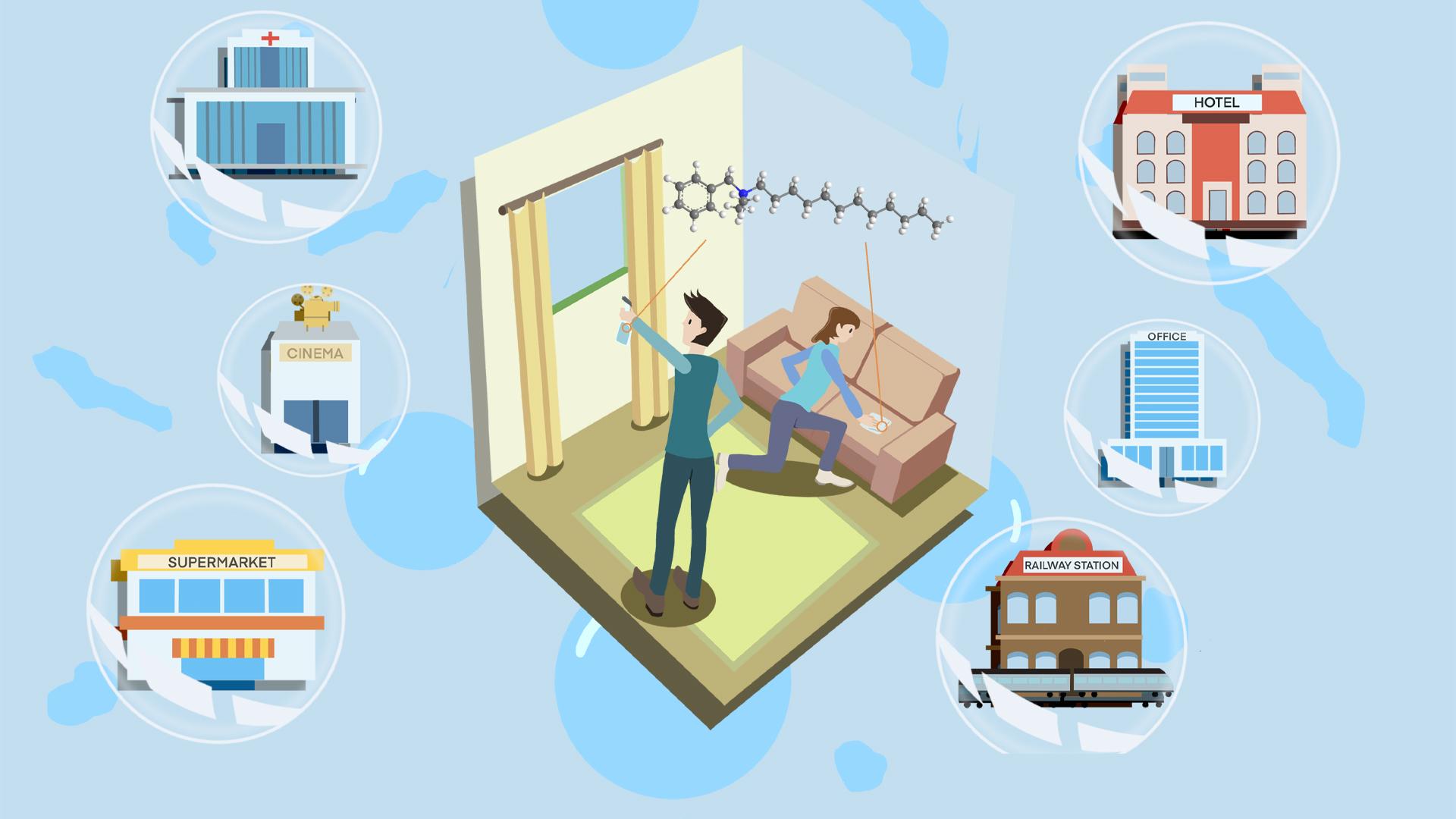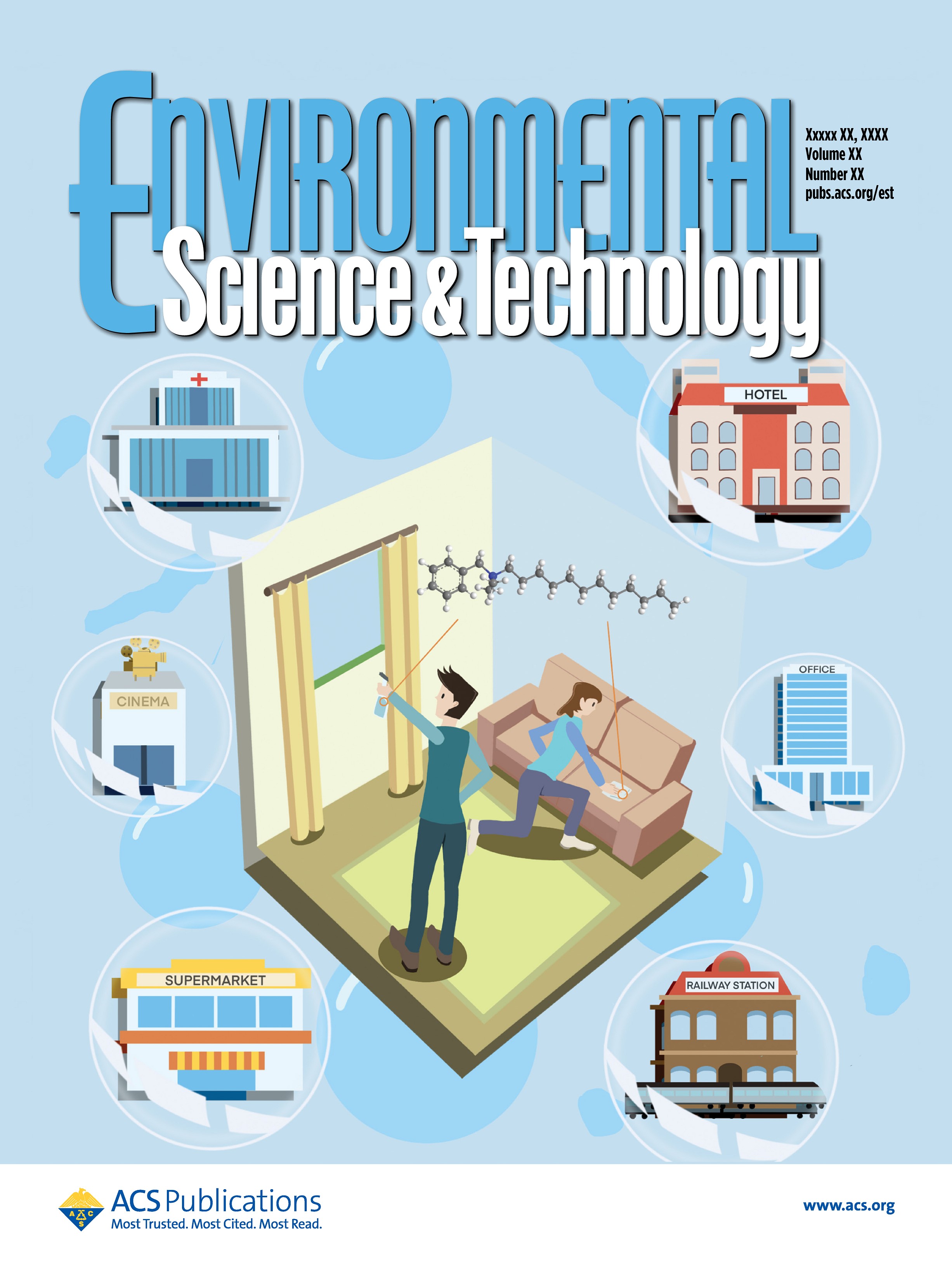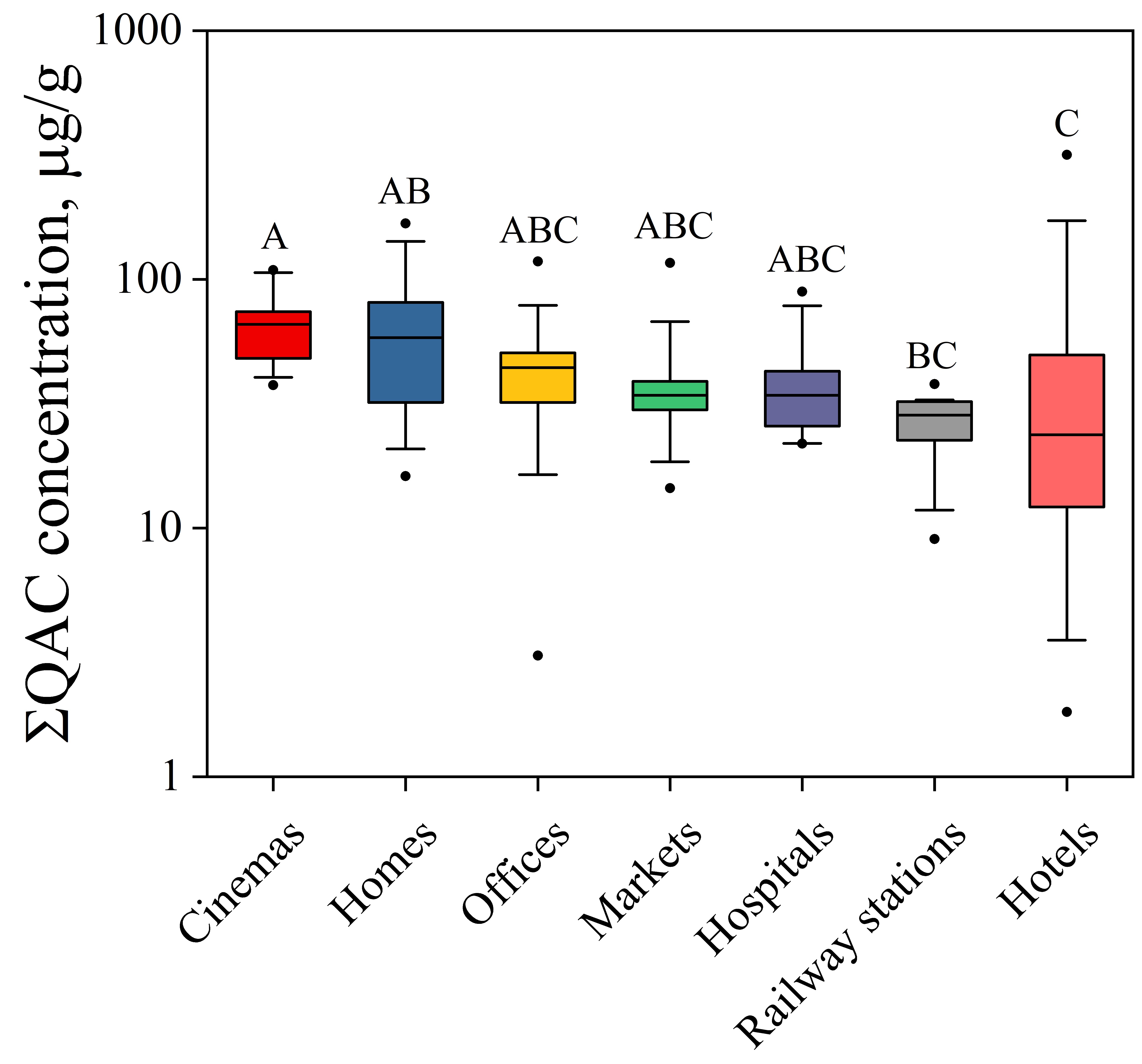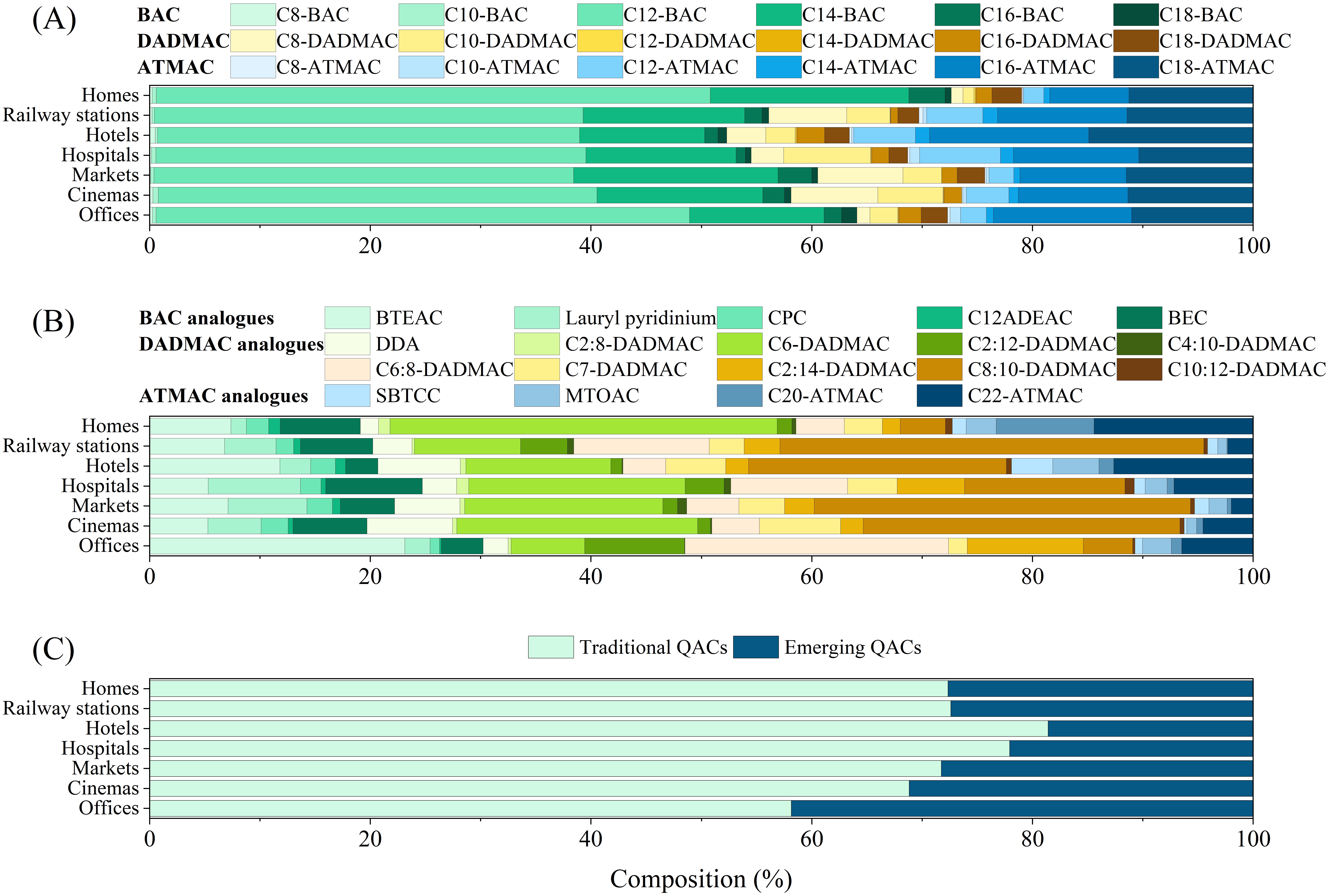Quaternary ammonium compounds (QACs) are a class of cationic compounds that are widely used as active ingredients in antibacterial agents, surfactants, preservatives, antistatic agents, fabric softeners, and dispersants. With the outbreak of the COVID-19 pandemic, antibacterial agents with QACs employed as the main components have been used in large quantities to disinfect viruses in the environments (especially indoor environments), leading to severe pollution in the indoor environment with these chemicals.
In previous reports, global research on such chemicals in indoor environments was limited to North America and Europe, while research in this field in China still needs to be done. In addition, previous studies were limited to residential indoor environments, and limited numbers of QACs were monitored.

Associate Professor Guomao Zheng’s research group from the School of Environmental Science and Engineering at the Southern University of Science and Technology (SUSTech) has recently published a study based on high-resolution mass spectrometry technology, combined with a targeted and suspect screening strategy to conduct a comprehensive screening of QACs in the indoor environments of homes and different public places.
The objectives of this study are to firstly identify emerging QACs in indoor dust and quantify their contribution to the total QAC concentration; secondly, to compare the dust concentrations of QACs measured in the current study and those reported in previous studies; and lastly, to investigate the distributions of traditional and emerging QACs in indoor dust across various microenvironments.
Their paper, entitled “High-Resolution Mass Spectrometry Screening of Quaternary Ammonium Compounds (QACs) in Dust from Homes and Various Microenvironments in South China”, has been published in Environmental Science & Technology and was selected as the supplementary cover of the current edition.

In this study, the research group combined targeted and suspect screening strategies to broaden the scope of monitoring and built a high-resolution mass spectrometry Personal Compound Database and Library (PCDL) based on suspect quaternary ammonium compounds on PubChem and EPA N List (Figure 1). Subsequently, the iterative DDA high-resolution mass spectrometry acquisition mode with multiple continuous injections was used to comprehensively screen more than 200 QACs among various indoor environments, including hospitals, railway stations, markets, cinemas, hotels, offices, and homes, and finally successfully identified 46 quaternary ammonium compounds, 15 of which were reported in those environments for the first time.

Figure 1. Screening strategies, chromatography, and high-resolution mass spectrometry for emerging quaternary ammonium compounds (QACs) in indoor environments
The results showed the highest ∑QAC concentrations (sum of traditional and emerging QACs) in dust were observed in cinemas (median 65.9 μg/g), followed by homes (58.3 μg/g), offices (44.2 μg/g), markets (34.2 μg/g), hospitals (34.1 μg/g), railway stations (28.4 μg/g), and hotels (23.7 μg/g) (Figure 2).

Figure 2. Comparison of QACs concentration levels and differences in dust in different indoor environments
The researchers also compared the composition of QACs in different indoor environments (Figure 3). In general, the composition of ∑emerging QAC (sum of emerging QACs) to ∑QAC (sum of traditional and emerging QACs) ranged from 19 to 42% across various microenvironments, indicating the widespread existence of emerging QACs in indoor environments. Additionally, it was noteworthy that relatively lower QAC concentrations were observed in samples from more well-ventilated (combination of natural and forced ventilation and forced, medians of 30.6 and 34.8 μg/g, respectively) than those from less well-ventilated (natural ventilation, 47.6 μg/g). Moreover, the relatively lower QAC concentrations were observed in samples from large volumes inside buildings (median 34.8 μg/g) than those of small volumes inside buildings (42.8 μg/g).

Figure 3. Comparison of the composition profiles and differences of QACs in dust from different indoor environments
It is worth mentioning that ∑QAC concentrations in dust collected in carpet-covered rooms were significantly higher than those in non-carpet indoor environments (65.6 μg/g vs. 32.6 μg/g, Mann−Whitney test, p < 0.05), which indicates that the use of textiles may be an additional source of QACs that should not be ignored, and further research is needed to confirm this observation in the future.
Yao Cheng, Research Assistant and currently a Ph.D. candidate at Jinan University, is the first author of this paper. Associate Professor Guomao Zheng is the corresponding author, and Researcher Chen Wang from the Chinese Academy of Environmental Sciences is the co-author. Other contributors to this work include group members Chenglin Liu, Zhong Lv, Yuge Liang, Yichun Xie, Sheng Wan, Xinrui Leng, and Min Hu.
This study was supported by the National Natural Science Foundation of China (NSFC) and the Shenzhen Key Laboratory of Precision Measurement and Early Warning Technology for Urban Environmental Health Risks.
Paper link: https://doi.org/10.1021/acs.est.3c09942
To read all stories about SUSTech science, subscribe to the monthly SUSTech Newsletter.
Proofread ByAdrian Cremin, Yingying XIA
Photo BySchool of Environmental Science and Engineering